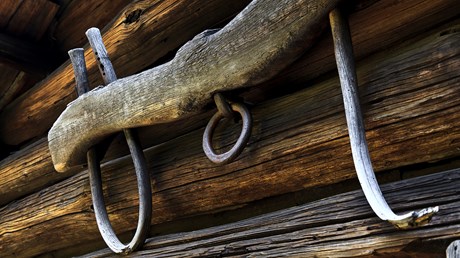Crime, punishment, and Christ’s easy yoke.

The cross of Christ has sometimes been compared to the electric chair or other forms of execution, meaning we are wise to remember that it was an instrument of death in the ancient world. The cross is also often used to prompt us to give ourselves sacrificially for him and others. But comparisons to other forms of execution can miss the deeper biblical teaching about the cross. And the cross is much more than an object lesson in how we should live. It’s very shape, it turns out, is not incidental to its deeper biblical meaning nor to the very nature of God who hung there.
To get at the deeper meaning, we can turn to the great Russian novelist Fyodor Dostoyevsky, especially one scene in the middle of Crime and Punishment. The lead character Rodion Raskolnikov had brutally murdered an elderly pawnbroker and moneylender, Alyona Ivanovna. When Ivanovna’s half-sister, Lizaveta, stumbled upon the scene, he murdered her as well.
Raskolnikov later meets a young woman, Sonia, who has been compelled by poverty to become a prostitute to support her family. He is immediately drawn to her, and after he learns that Sonia had been friends with Lizaveta, he feels compelled to confess his murders to her. He finally musters up the courage to do so, but only indirectly, leaving her to work out for herself that Lizaveta’s murderer is the man speaking with her. When it dawns on her what he has just confessed,
She jumped up, seeming not to know what she was doing, and, wringing her hands, walked into the middle of the room; but quickly went back and sat down again beside him, her shoulder almost touching his. All of a sudden she started as though she had been stabbed, uttered a cry and fell on her knees before him, she did not …
Source: Christianity Today Most Read